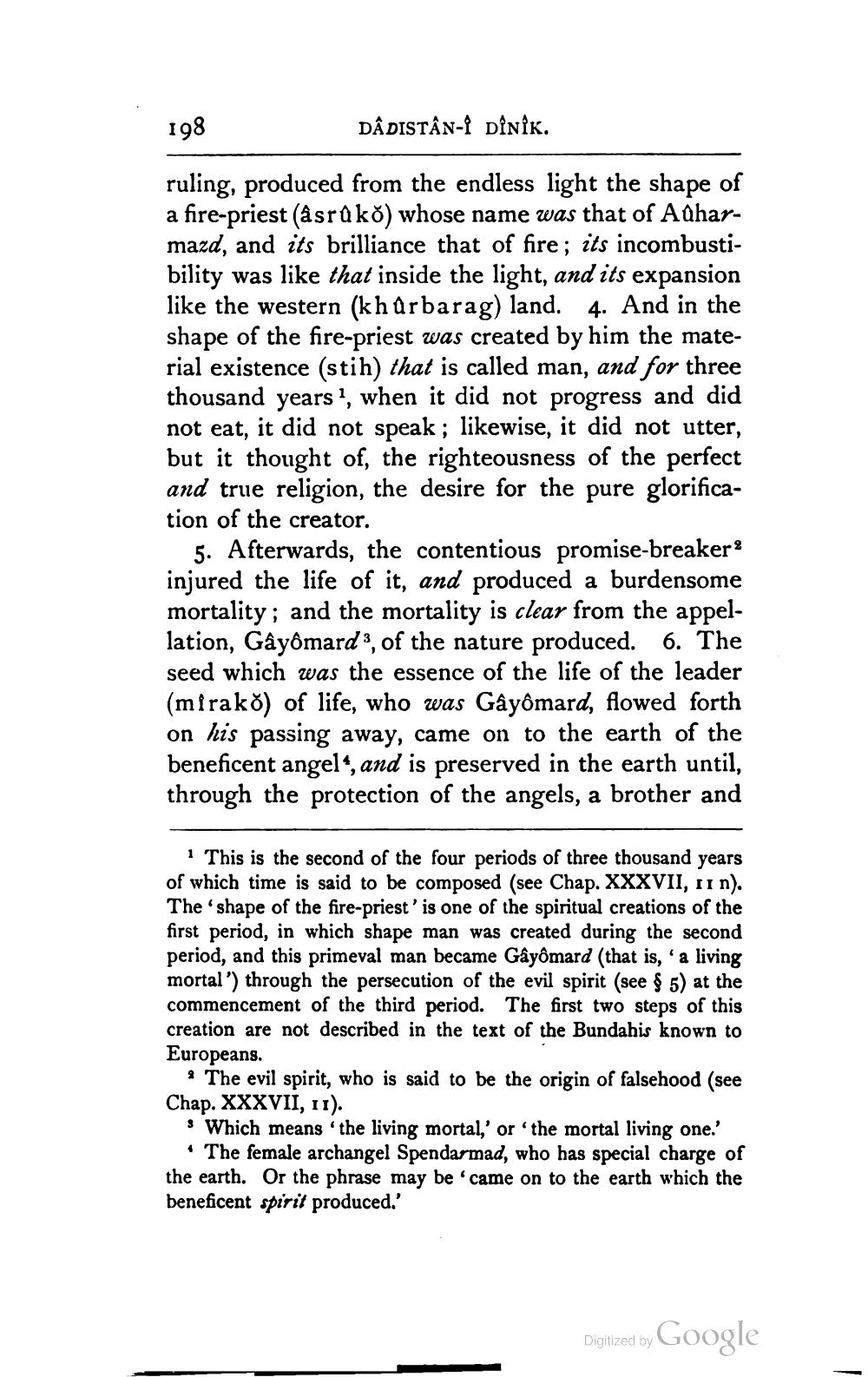________________
198
DÂDISTÂN-Î DÎnik.
ruling, produced from the endless light the shape of a fire-priest (asrako) whose name was that of Adharmazd, and its brilliance that of fire; its incombustibility was like that inside the light, and its expansion like the western (khûrbarag) land. 4. And in the shape of the fire-priest was created by him the material existence (stih) that is called man, and for three thousand years !, when it did not progress and did not eat, it did not speak; likewise, it did not utter, but it thought of, the righteousness of the perfect and true religion, the desire for the pure glorification of the creator.
5. Afterwards, the contentious promise-breaker? injured the life of it, and produced a burdensome mortality; and the mortality is clear from the appellation, Gâyômard3, of the nature produced. 6. The seed which was the essence of the life of the leader (mirako) of life, who was Gâyômard, flowed forth on his passing away, came on to the earth of the beneficent angel“, and is preserved in the earth until, through the protection of the angels, a brother and
1 This is the second of the four periods of three thousand years of which time is said to be composed (see Chap. XXXVII, rin). The shape of the fire-priest' is one of the spiritual creations of the first period, in which shape man was created during the second period, and this primeval man became Gâyömard (that is, a living mortal ') through the persecution of the evil spirit (see $ 5) at the commencement of the third period. The first two steps of this creation are not described in the text of the Bundahis known to Europeans.
The evil spirit, who is said to be the origin of falsehood (see Chap. XXXVII, 11).
Which means the living mortal,' or 'the mortal living one.' • The female archangel Spendarmad, who has special charge of the earth. Or the phrase may be came on to the earth which the beneficent spirit produced.'
Digitized by Google




